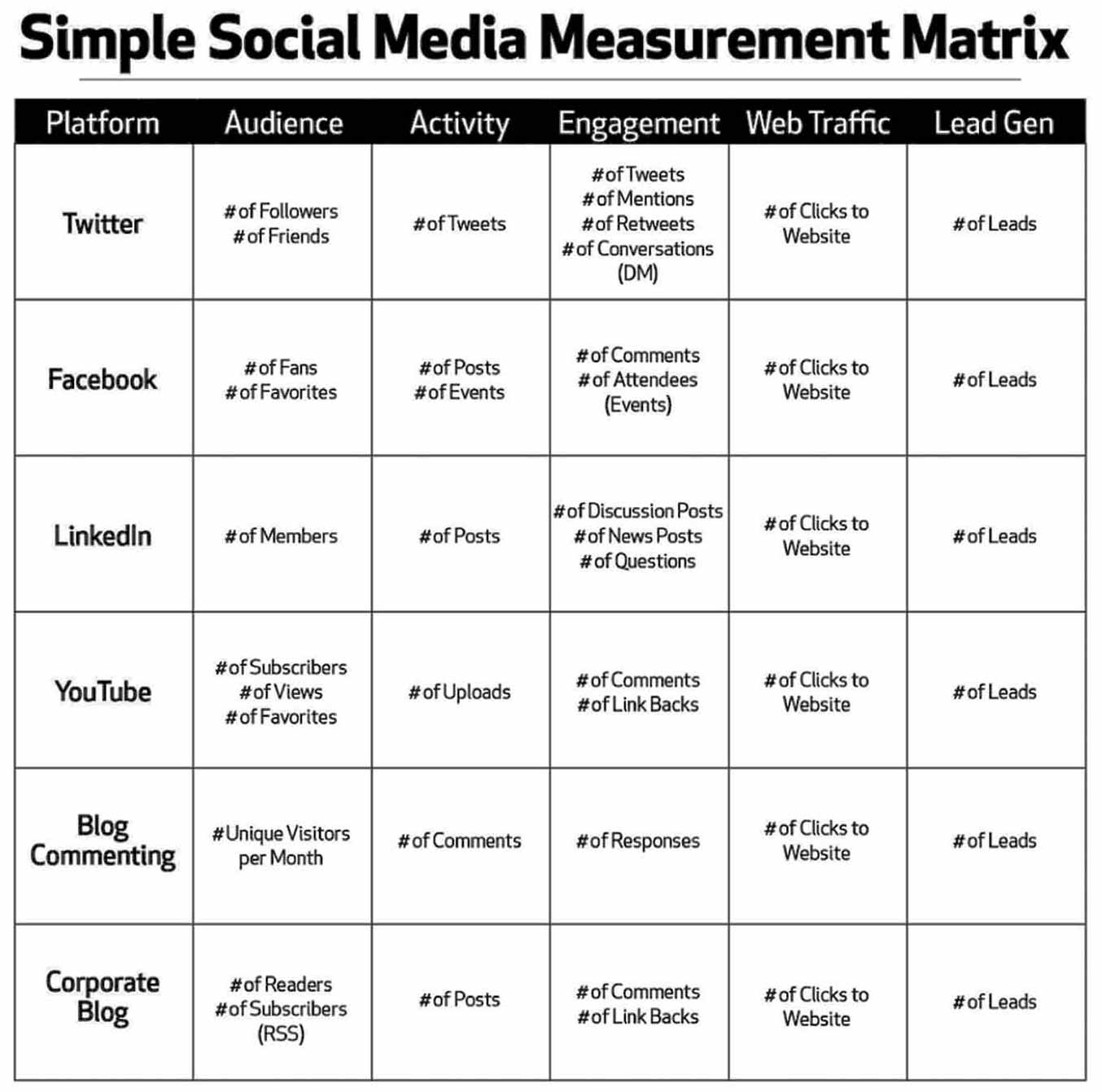The majority of businesses today recognize the potential value of social media engagement. However, without a clear understanding of how to measure that value, they hesitate to invest. Social media platforms are often “free,” but the time and effort needed for a successful campaign are not.
But how do you begin the process of realizing the value of social media? It’s not that much different from doing any marketing or PR planning, says Sally Falkow, president of PRESSfeed, a social media newsroom, and social media strategist at Meritus Media. You can’t measure something if you don’t have goals at the beginning. This is a common mistake, says Falkow—throwing social media stuff on the wall and seeing if it sticks. “Then after two months your boss asks, ‘What’s your ROI,’ and you don’t have an answer,” she says.
Plan strategically, have a process, and then monitor conversations and discover what the problems and opportunities are, says Falkow.
Only then can you take steps to build in key performance indicators (KPIs) to demonstrate the value of this investment, says Sandra Fathi, president of Affect Strategies, a PR, marketing and social media agency in New York. Regularly measuring the results of your campaigns will allow you to pinpoint a direct relationship or a correlation between your efforts and the business metrics that matter to your organization, such as sales leads and revenue generation.
Social media measurement technology tools, while frequently marketed to PR practitioners, are still maturing, continues Fathi. Unfortunately, many still require extensive staff training and manual manipulation to score through results and translate them for your client or executive. Making the measurement process proprietary to align with your company’s business goals is most often a much more effective use of your department’s time.
That is a strategy Angela Jeffrey, VP of integrated media at VMS, a communications monitoring and analysis firm, can agree with. “Ask yourself, what can I do in PR to affect the brand and the organization?” says Jeffrey. And, be specific—determine what you’re going to achieve in terms of numbers and percentages of growth during a specific period of time, adds Jeffrey.
 |
| Created by Affect Strategies, a NYC-based PR, marketing and social media firm: www.affectsstrategies.com |
Creating a custom social media measurement matrix, says Fathi, will allow you to examine the quantitative data, and not just the qualitative, which is the most effective way to directly and clearly correlate campaign achievements with company business objectives.
A simple social media measurement matrix that is personalized for each campaign or client is easy to implement and manage in your organization (see sample matrix). Here’s a guide from Fathi for how to create and implement a matrix in your agency or department:
1. Determine Your Goals: Before you create a matrix to fit your campaign, step back and determine the goals you’d like to measure your progress against. A measurement matrix is designed to highlight quantitative data such as Web site traffic and lead generation.
2. Design a Matrix for Your Goals: A successful social media matrix provides an at-a-glance comparison of social media activity and business results. To create yours, set up a matrix or table in Excel or Word, with a row for each platform (e.g., LinkedIn, Twitter, Facebook). Then create columns for tallying various social media engagement metrics for each platform including audience (e.g., number of followers or fans), activity (e.g., number of posts or comments), engagement (e.g., number of retweets or responses).
3. Integrate the Matrix Into Daily Activity: The majority of these metrics can be found within the platforms themselves. It may require some tallying, but the information is readily available. If the matrix is designed at the onset of a campaign or account, the account teams can insert the tallying into their day-to-day reporting activities, which will make the undertaking less time intensive. The last two columns in this matrix require intelligence from your company or client. Web traffic requires insight into analytics from a company Web site or analytics system which should be available from your Web team. Lead gen depends on your internal process for tracking sales sources if it’s part of the intake process.
4. Keep It Flexible: Ultimately, the goal of the matrix is to provide a simple and usable method for showcasing the value of your social media efforts to your client or executive. It can also provide an indication of whether a campaign needs to be adjusted midstream to better align with your goals. Social media is always changing, as new platforms and functionalities are regularly released. Stay current on these developments and update the matrix as needed. PRN
[Editor’s Note: This article is adapted from PR News’ PR Measurement Guidebook, Vol. 5 . To order this newly published guidebook visit https://www.prnewsonline.com/store/50.html.]
CONTACT:
Sandra Fathi, [email protected]; Sally Falkow, [email protected]; Angela Jeffrey, [email protected].
